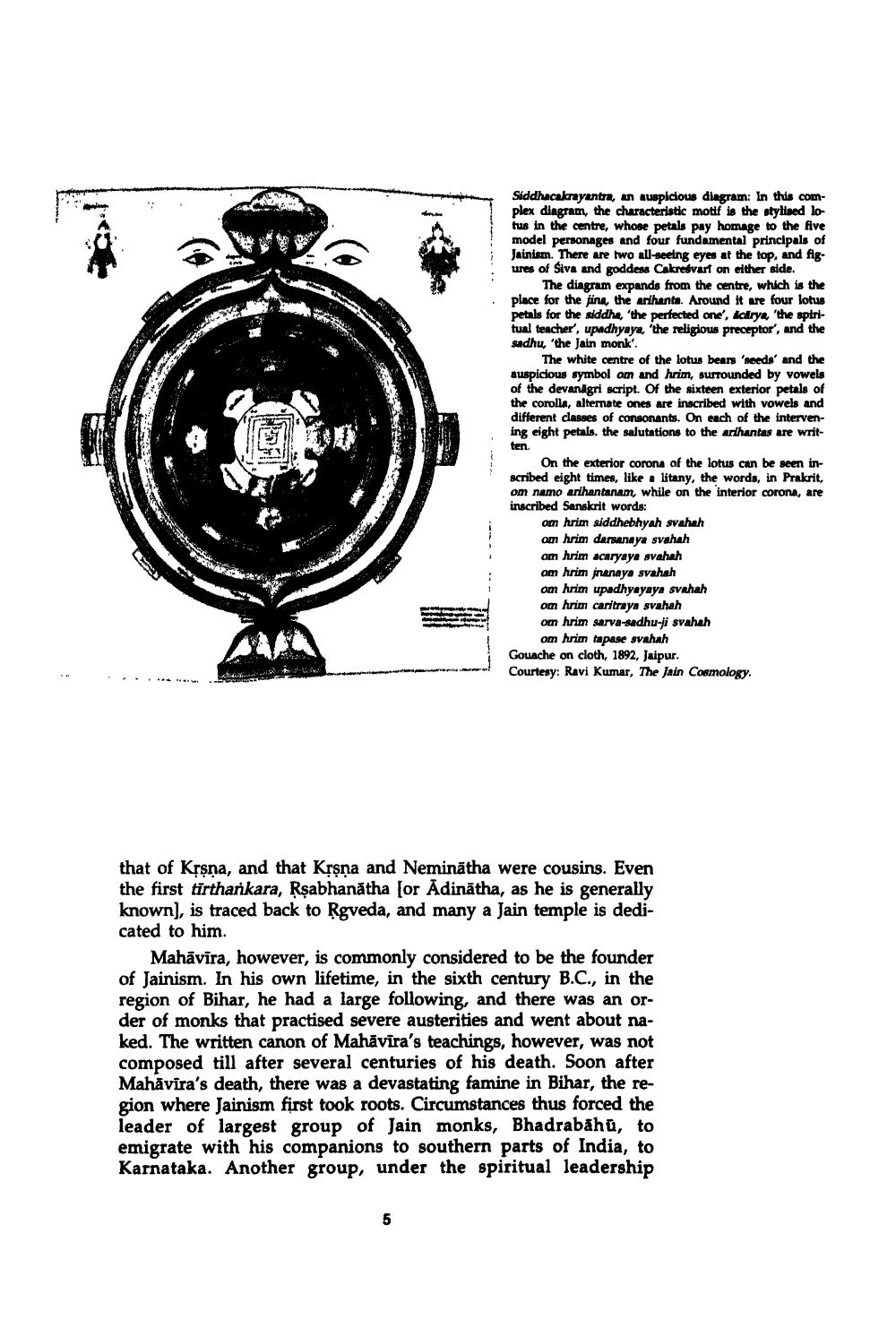________________
Mim
Siddhacakrayantra, an auspicious diagram: In this complex diagram, the characteristic motif is the stylised lo tus in the centre, whose petals pay homage to the five model personages and four fundamental principals of Jainism. There are two all-seeing eyes at the top, and figo ures of Siva and goddess Cakresvart on either side.
The diagram expands from the centre, which is the place for the jina, the arthanta. Around I are four lotus petals for the siddha, 'the perfected one', Acarya 'the spiritual teacher', upadhyaya, 'the religious preceptor', and the sadhu, 'the Jain monk'.
The white centre of the lotus bears 'needs' and the auspicious symbol om and hrim, surrounded by vowels of the devanagri script. Of the sixteen exterior petals of the corolla, alternate ones are inscribed with vowels and different classes of consonants. On each of the intervening eight petals, the salutations to the arthantas are written
On the exterior corona of the lotus can be seen in scribed eight times, like a litany, the words, in Prakrit, om namo arihantanam, while on the interior corona, are inscribed Sanskrit words:
om hrim siddhebhyah svahah om hrim darsanaya svahah om hrim acaryaya svahah om hrim jnanaya svahah om hrim upadhyayaya svahah om hrim caritreya svahah om hrim sarva-sadhu-ji svahah
om hrim tapase svahah Gouache on cloth, 1892, Jaipur. Courtesy: Ravi Kumar, The Jain Cosmology.
2.
.
.
.
.
....
.
that of Krsna, and that Krsna and Neminātha were cousins. Even the first tirtharikara, Rşabhanātha (or Adinātha, as he is generally known), is traced back to Rgveda, and many a Jain temple is dedicated to him.
Mahāvīra, however, is commonly considered to be the founder of Jainism. In his own lifetime, in the sixth century B.C., in the region of Bihar, he had a large following, and there was an order of monks that practised severe austerities and went about naked. The written canon of Mahāvīra's teachings, however, was not composed till after several centuries of his death. Soon after Mahāvīra's death, there was a devastating famine in Bihar, the region where Jainism first took roots. Circumstances thus forced the leader of largest group of Jain monks, Bhadrabahu, to emigrate with his companions to southern parts of India, to Karnataka. Another group, under the spiritual leadership




